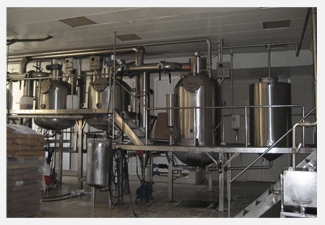Halva - a confectionery product made from crushed and fried nucleoli of oil seeds or nuts, which are mixed with a caramel mass and knocked down with a foaming substance. This sweetness is characterized by a layered fiber structure.
On sale you can find the following types: sunflower, peanut and soy halva. If it is made from sesame seeds, then it is called tahini. Regardless of what halva is based on (oil seeds or nuts), it is necessary to distinguish the following main components: protein mass, caramel mass (molasses and sugar), as well as honey and a foaming agent. However, the industrial production of halva honey does not use.

Ingredients
The following ingredients are used as a foaming agent in halva: clavicle root (soap root), licorice root, egg white and marshmallow root. Often in this sweet you can find dyes, flavors and various flavoring additives. Of course, the use of natural ingredients is encouraged: cocoa powder, vanilla, pistachios and chocolate.
There are differences in the basis for protein mass. So, for tahini halva, ground sesame is used, sunflower seeds - ground seeds, peanut - chopped peanuts. Often you can find a combined halva (an example is tahini-peanut).
Made from cashews, almonds or walnuts, sweets are much less common than vanilla. This is due to the fact that the technology for the production of halva of these types is characterized by a certain complexity and high cost, which leads to the high cost of finished products.
Production process
 This confectionery product is made in several stages, which are common to all types of halva.
This confectionery product is made in several stages, which are common to all types of halva.
These include: the manufacture of grated mass, the preparation of caramel mass, soap root extract, as well as knocking down the last two components.
The final stages are: kneading, packaging and transfer of finished products to the warehouse for further sale.
To obtain a high-quality and delicious confectionery, it is necessary to choose the right equipment for the production of halva.
Moreover, the list of used devices is quite wide, and their specific types are involved at each specific stage of the industrial process.
Comparison of equipment of foreign and domestic manufacturer
As mentioned above, in the process of making this sweet, you may need special devices of both domestic production and special lines from Western companies. At the same time, the installation for the production of halva of the European brand in comparison with the Russian counterpart costs an order of magnitude more expensive. Turning to the figures, a foreign automated line costs 4 million rubles, and 1.2 million rubles are installed by domestic companies.
The main structural elements of an automated line
Equipment for halva production consists of such machines and devices: a windrower and a rush machine, a calibrator, a hammer mill, a roasting machine with subsequent cooling of nuts and seeds, and a caramelizer. Essential components of any line are bathtubs for mixing halva.
This equipment for the production of halva allows it to be produced in several forms: sunflower with various fillers (for example, raisins), peanut, vanilla and chocolate glazed.

However, the production process will not be complete without an automated line responsible for packaging finished products. Again, considering foreign analogues: there the specified line is included. Using this equipment, in addition to packaging, labels are glued. Its cost is about 1 million rubles.
Sales of finished products
In the process of cost formation it is necessary to take into account that for industrial volumes, the number of employees of at least 6 people, including a foreman, technologist and workers, may be required. At some enterprises, the staff includes managers who are involved in identifying markets for finished products. This confectionery product can be sold both through retail chains and wholesale companies that supply goods to grocery stores on their own.

On average, the price of halva in retail sales is over 100 rubles per kilogram. Wholesale sales - from 50 rubles. In average prices for raw materials, the cost of halva is about 30 rubles per kilogram.
Total, with a monthly sale of at least 20 thousand kilograms, the manufacturer’s revenue will be from 1 million rubles, and monthly net profit - 150 thousand rubles. Thus, the payback period of the initial investment will be about two years.
Summing up the material presented, it should be noted that correctly selected equipment for halva production will allow you to get maximum profit in the shortest possible time.








